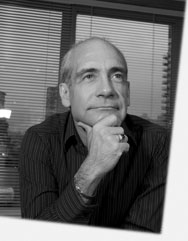Good morning from Victoria, BC where the sun is trying very hard to break through. I hope this note finds each of you trying very hard to bring your light to your part of the world.
Inspired once again by a Harvard blog, this one from Duncan Watts, called “What are Leaders Really For?” at www.hbr.com Watts writes that the “Occupy Wall Street has both perpexed and frustrated observers and analysits by its persistent refusal to nominate an identifiable leadership who can in turn articulate a coherent agenda.” He then notes that as frustrated as some of us are with this lack of “leadership’ from within the Occupy Movement, that frustration has much to say about us and our models of change. Most of us, consciously or unconsciously imagine change as something that occurs because of a “great man” (or less often in our minds, “great woman”) who lead the many in particular directions. Change however does not occur because there is a great person leading it. In the words of Margaret Mead (who Watts also quotes), “never doubt that a small group of thoughtful, committed people can change the world. Indeed it is the only thing that ever has.” And in fact, Dr. Mead is correct, changes happen not because a particular leader has an idea and lead his or her people in that direction, rather, change happens when a group of people happen upon a creative force and begin the diligent and often dangerous work of making that change manifest. It becomes the role of leaders to be able to articulate and describe the story of what is happening, to help others derive sense and meaning of it. A key attribute for leaders then is the ability to make sense of events and to tell stories about them.
I’m reminded of the brilliant work of Margaret Wheatley, www.margaretwheatley.com and her description that organizations are much like natural organisms and therefore have life cycles. They are born, they grow, they become middle aged, they age and then they die. And in the midst of their aging and dying there are seeds of possibility and creativity that are beginning to grow within the dying organization. She sees then that a key role of leadership is to be both palliative care giver, helping the old ways die gracefully and as painlessly as possible, and neo-natal care giver, nurturing and protecting the new seeds as they take root and grow.
And so our work then, looking into a future of revolutionary change is to identify those seeds of creativity and possibility within our potentially dying organizations, to help those seeds develop narrative and meaning for themselves and to help to articulate those stories.
May each of us be neo natal at least once with an idea in our organization this week!

